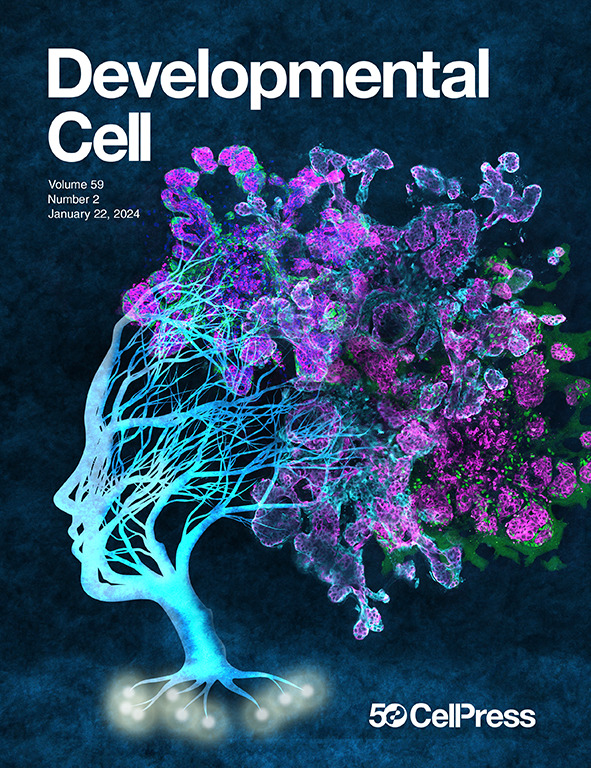Deubiquitinase USP9X controls Wnt signaling for CNS vascular formation and barrier maintenance
IF 8.7
1区 生物学
Q1 CELL BIOLOGY
引用次数: 0
Abstract
Deubiquitinating enzymes play crucial roles in various cellular activities, yet their involvement in central nervous system (CNS) vascularization and barrier function remains elusive. Canonical Wnt signaling is essential for proper CNS vascularization and barrier maintenance. Using a loss-of-function screening for Wnt-signaling activity, we identified ubiquitin-specific peptidase 9 X-linked (USP9X) as a key regulator in brain endothelial cells (BECs). Endothelium-specific Usp9x knockout mice exhibit reduced Wnt-signaling activity, compromising CNS vascularization and barrier function during development. Activation of Wnt signaling rescues these defects. Mechanistically, we identified β-catenin as a direct substrate of USP9X, with USP9X catalyzing K48 polyubiquitin chains to stabilize β-catenin. In pathological mouse models of impaired CNS vascular barrier function, including intracerebral hemorrhage and an oxygen-induced retinopathy, loss of Usp9x intensifies barrier disruption, accentuating defects. This finding implicates USP9X as a critical regulator of CNS vascularization and barrier function through Wnt signaling, offering insights into CNS disease implications.

去泛素酶USP9X控制中枢神经系统血管形成和屏障维持的Wnt信号
去泛素化酶在多种细胞活动中起着至关重要的作用,但其在中枢神经系统血管化和屏障功能中的作用尚不清楚。典型的Wnt信号对于正常的中枢神经系统血管化和屏障维持至关重要。利用wnt信号活性的功能缺失筛选,我们发现泛素特异性肽酶9x -linked (USP9X)是脑内皮细胞(BECs)的关键调节因子。内皮特异性Usp9x敲除小鼠表现出wnt信号活性降低,在发育过程中损害中枢神经系统血管化和屏障功能。激活Wnt信号可以挽救这些缺陷。在机制上,我们确定β-catenin是USP9X的直接底物,USP9X催化K48多泛素链来稳定β-catenin。在CNS血管屏障功能受损的病理性小鼠模型中,包括脑出血和氧致视网膜病变,Usp9x的缺失加剧了屏障的破坏,加重了缺陷。这一发现表明USP9X是通过Wnt信号调节中枢神经系统血管化和屏障功能的关键调节因子,为中枢神经系统疾病的研究提供了新的见解。
本文章由计算机程序翻译,如有差异,请以英文原文为准。
求助全文
约1分钟内获得全文
求助全文
来源期刊

Developmental cell
生物-发育生物学
CiteScore
18.90
自引率
1.70%
发文量
203
审稿时长
3-6 weeks
期刊介绍:
Developmental Cell, established in 2001, is a comprehensive journal that explores a wide range of topics in cell and developmental biology. Our publication encompasses work across various disciplines within biology, with a particular emphasis on investigating the intersections between cell biology, developmental biology, and other related fields. Our primary objective is to present research conducted through a cell biological perspective, addressing the essential mechanisms governing cell function, cellular interactions, and responses to the environment. Moreover, we focus on understanding the collective behavior of cells, culminating in the formation of tissues, organs, and whole organisms, while also investigating the consequences of any malfunctions in these intricate processes.
文献相关原料
公司名称
产品信息
索莱宝
Urea
 求助内容:
求助内容: 应助结果提醒方式:
应助结果提醒方式:


